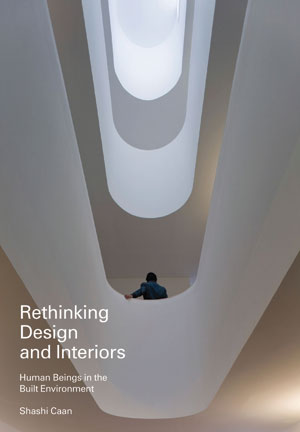In the arc of an architecture or interior-design student’s education, she may encounter the image of Abbé Laugier’s “primitive hut” a dozen times. Not that there’s anything wrong with it, but if you’ve ever sat in a darkened lecture hall and wondered, “Is that all there is?” then Shashi Caan’s Rethinking Design Interiors: Human Beings in the Built Environment is for you. Caan is the former chair of interior design at Parsons The New School for Design in New York and a founder and principal of the architecture, interiors, and design practice The Collective. Her insightful and beautifully illustrated manifesto for the interior design profession offers readers the literary equivalent of 3-D glasses for viewing both long-established and emerging theories about the built environment. Laugier’s hut does make an appearance, but there is so much more.

Caan draws on sources as diverse as prehistoric caves and the sculpture of Richard Serra to argue the essential role of the interior in supporting human well-being. To secure the profession’s longevity and expand its impact, Caan argues that interior designers must possess a foundation of precise, empirical knowledge of human needs and behavior to support their formal and aesthetic choices. She writes, “This is the crux of the matter: the task of design is not limited to the creation of a few incidental or stand-alone objects. It is a comprehensive means of shaping the future of the entire built environment and every human interaction that takes place within it.”
Rethinking Design and Interiors delves into potential models for the interior design profession’s expanding scope of services. Among them are the relatively young field of psychology and the methodologies of the Bauhaus and Josef Albers. Caan also cites the phenomenological curriculum of Reggio Emilia preschools as relevant to the education of design students. Reggio Emilia schools emphasize experiential learning and observation over the rote memorization of facts. Following this example, a design student’s understanding of light, for instance, might be more complex and personal, thus leading to the design of better environments.
Architects will find Caan a compelling advocate for her profession. Less compelling are the frequent reminders that interior design has received insufficient respect from other design disciplines. However valid, this thread ironically reinforces the condition she decries. Readers would do well not to dwell on these slights, but instead to savor Caan’s carefully composed chapters, images, captions, and endnotes that illuminate a profession of great merit, tradition, and possibility.






Post a comment to this article
Report Abusive Comment